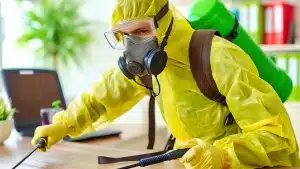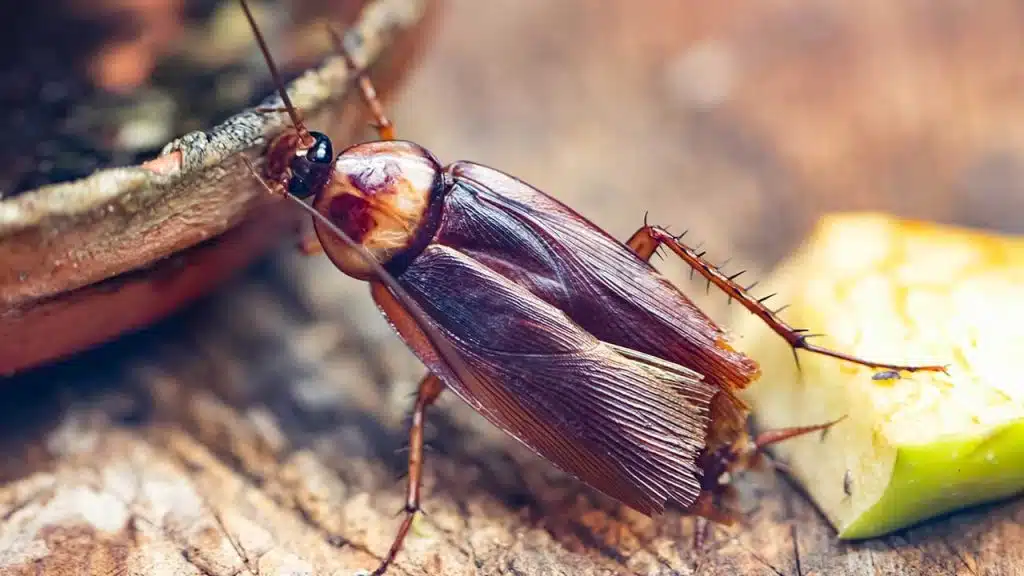


German roaches are smaller, lighter in color, and prefer indoor environments, while American roaches are larger, darker, and often found outdoors. Identifying the type of cockroach infestation is crucial for effective control.

Cockroaches are among the most unwelcome pests in any home or business, and distinguishing between German and American roaches is key to tackling an infestation. German roaches, Blattella germanica, typically measure about half an inch and favor warm, humid conditions often found in kitchens and bathrooms.
On the other hand, American roaches, Periplaneta americana, can grow over two inches long and usually inhabit basements, sewers, and drains. Understanding these differences aids in choosing targeted pest control strategies, ensuring a cleaner and healthier living environment. Effective management requires not only identification but also a strategic approach to eradication and prevention.
Imagine a showdown between two of the most common roaches. The German roach and the American roach top the list. They invade homes and cause distress. Knowing their differences matters. It helps in effective pest control. Let’s dive into the profiles of these two pests.
German Roaches: Small but troublesome, these pests invade kitchens. They love warm, moist areas. They are light brown and have two dark stripes. They reproduce fast and spread diseases.
American Roaches: These are the larger roaches you might see. They are reddish-brown and prefer warmer climates. They can fly short distances. They are often found in basements or sewers.
Why know your roaches? Different roaches need different control methods. Correct identification leads to better pest management. It saves time and money. It also ensures a roach-free home.
Feature | German Roach | American Roach |
|---|---|---|
Size | Small (13-16 mm) | Large (up to 40 mm) |
Color | Light brown | Reddish-brown |
Habitat | Indoors | Indoors/Outdoors |
Behavior | Hides in cracks | Can fly short distances |
German roaches invade indoor spaces.
American roaches thrive indoors and outdoors.
Identify the roach.
Use the right control method.
Keep your home pest-free.
Credit: www.fullscopepestcontrol.com
Let’s explore the physical characteristics of German and American roaches. Understanding these traits helps identify them easily.
German and American roaches differ greatly in size and color.
Type | Size | Color |
|---|---|---|
German Roach | 13-16 mm | Light brown to tan |
American Roach | Up to 53 mm | Reddish-brown |
German roaches are smaller with a light brown shade. American roaches are larger and reddish-brown.
German Roach: Has two dark stripes on its back.
American Roach: Sports a figure-eight pattern on its head.
These distinctive features make identification easier. German roaches have stripes. American roaches have a unique pattern.
Understanding the habitats and behaviors of German and American roaches is crucial. These insights help control and prevent infestations. Let’s explore their distinct living conditions and diets.
German roaches thrive in warm, humid environments. They prefer close proximity to food and water sources. You’ll often find them in kitchens and bathrooms.
American roaches, on the other hand, favor dark, moist spaces. Basements and sewers are their common hideouts. They can adapt to a variety of settings, both indoors and outdoors.
Roaches are notorious for their broad diet. German roaches often eat food scraps, especially starchy and sugary items. They also consume non-food materials when food is scarce.
American roaches exhibit similar feeding patterns. However, they have a penchant for decaying organic matter. They are less picky and will consume almost anything edible.
Roach Type | Preferred Habitat | Diet |
|---|---|---|
German Roach | Indoor, humid areas near food and water | Food scraps, starches, sugars |
American Roach | Indoor/outdoor, dark and moist spaces | Decaying matter, various edibles |
Both species are active at night and avoid light. They can eat a lot at once or survive on little for long periods. Their adaptability in diet and habitat makes them tough pests to manage.
Understanding the reproductive cycles of pests is key to control. Let’s dive into how German roaches and American roaches reproduce.
The life span of German and American roaches differs. German roaches live about 100-200 days. American roaches can live up to 700 days. Both types of roaches mature quickly. German roaches take about 50-60 days. American roaches need about 600 days.
Roaches lay eggs in capsules known as oothecae. German roaches are prolific breeders. They produce more oothecae than American roaches. A single German roach can produce up to 8 oothecae. Each contains up to 48 eggs. American roaches produce fewer oothecae. Each holds up to 16 eggs.
Roach Type | Oothecae per Lifetime | Eggs per Ootheca |
|---|---|---|
German Roach | 4-8 | 30-48 |
American Roach | 9-10 | 14-16 |
In conclusion, German roaches can multiply faster. This makes them tougher to eliminate. American roaches have fewer offspring. But they can still infest homes quickly if not controlled.
Understanding the ‘Geographical Distribution’ of roaches is key. It highlights where these pests thrive. This knowledge helps in managing and preventing infestations.
The German roach and American roach differ in origin. Their spread around the world is due to human activity. Below, we explore their native and introduced habitats.
German Roaches: Originally from Southeast Asia. Now found worldwide.
American Roaches: Native to Africa. Also spread globally.
Both species are common in urban areas. They hitch rides in luggage, boxes, and furniture. This leads to their wide distribution.
German and American roaches have adapted to various climates. Their survival skills differ. This section looks at how they manage in different weather conditions.
Roach Type | Cold Tolerance | Heat Tolerance | Humidity Preference |
|---|---|---|---|
German Roach | Poor | High | High |
American Roach | Better | High | High |
German roaches prefer indoor warmth. American roaches are more versatile. They can live indoors and outdoors. Both types love humidity.
Credit: www.cooperpest.com
Understanding the health risks and impacts of roaches is crucial. German and American roaches carry diseases and cause damage. Let’s explore.
Roaches are not just scary. They carry germs and allergens. These pests can spread various diseases. They pick up germs while crawling through dirty areas. Then, they bring these germs into our homes. Below are some diseases and allergens associated with these pests:
Salmonella: Causes food poisoning.
E. coli: Leads to severe stomach upset.
Asthma triggers: Roach allergens can worsen asthma, especially in kids.
Both German and American roaches pose these health risks. Regular cleaning can help reduce these risks.
Roaches do more than spread diseases. They cause economic and domestic damage. Here’s how:
Type of Roach | Damage Caused |
|---|---|
German Roach | Infests kitchens, spoiling food and utensils. |
American Roach | Larger, can damage book bindings and fabrics. |
Preventing roach infestations saves money and keeps homes safe. Regular pest control is key.
Roaches are unwelcome guests in any home. Different strategies work for German and American roaches. Understanding these pests helps in control and management.
Prevention is key in roach control. Keep them out to avoid infestation.
Seal cracks and crevices in walls.
Fix leaky faucets and pipes.
Store food in sealed containers.
Clean spills and crumbs immediately.
Use trash cans with tight lids.
Regular cleaning reduces roach attractions.
When prevention fails, eradication becomes necessary. Use these techniques:
Technique | German Roach | American Roach |
|---|---|---|
Bait Stations | Effective | Less effective |
Insecticide Sprays | Use with caution | Good for spot treatment |
Gel Baits | Highly effective | Works well |
Glue Traps | Monitor infestations | Monitor infestations |
I.G.R. | Inhibits growth | Inhibits growth |
Always read labels and follow instructions for safe use. Professionals can help with severe cases.
Credit: bugmanonline.com
The Future of Infestation shines a light on what to expect with German and American roaches. Changing climates and urban sprawl affect roach populations. Pest control evolves too. Understanding these changes helps us prepare for future challenges.
German and American roaches adapt over time. Their survival skills are impressive. Cities grow, and so do roach habitats. Warmer temperatures may boost their numbers. These trends alert us to potential infestation spikes.
German roaches thrive indoors, favoring warm and humid spots.
American roaches prefer outdoors but come inside for food and water.
Both species breed quickly, creating large populations fast.
Pest control technologies improve constantly. These advancements target roaches more effectively. They reduce infestations with precision.
Method | German Roach | American Roach |
|---|---|---|
Baits | Very effective | Effective |
Insect Growth Regulators | Disrupts life cycle | Disrupts life cycle |
Heat Treatment | Good for contained areas | Less effective |
New bait formulas attract roaches better. Insect growth regulators stop babies from growing. Heat treatments cook them in hidden spots. These tools help keep homes roach-free.
Public Perception and Myths about roaches often distort the truth. People usually view German and American roaches with disgust. Many myths surround these pests. Let’s debunk some common misconceptions and examine cultural attitudes.
All roaches are dirty: Not all species thrive in unclean areas.
Roaches only live in messy homes: Clean homes can have roaches too.
Roaches are indestructible: They can be controlled with proper methods.
Attitudes toward roaches vary globally. Some cultures see roaches as omens. Others use them in medicine. Fear and disgust are common in many places.
Exploring the relationship between German roaches and American roaches raises a question. Should we aim for coexistence or combat? This section dives into the final verdict on these two common household pests.
Human homes offer roaches shelter, warmth, and food. This invites both German and American roaches inside. Bold action is often necessary to keep these pests at bay. Simple steps can make a big difference in controlling their populations:
Seal entry points to block access.
Maintain cleanliness to remove food sources.
Use baits and traps to catch and kill roaches.
Without human intervention, roach numbers could skyrocket, leading to more encounters.
Both German and American roaches play roles in nature. They break down organic matter, aiding decomposition. Yet, their balance is delicate. In homes, they become pests and threaten human health. To maintain ecosystem balance:
Limit pesticide use to avoid harming non-target species.
Encourage natural predators to control roach numbers.
Support research for eco-friendly pest solutions.
Responsible practices ensure roaches do not overrun other species.
Understanding the differences between German and American roaches is crucial for effective pest control. Both species have unique behaviors and habitats, necessitating tailored strategies to manage them. Remember, identifying your adversary is the first step in winning the battle against these unwelcome houseguests. Stay informed, stay vigilant, and keep your home roach-free.
The German cockroach is notoriously the hardest roach to eliminate. Its resilience, rapid breeding, and adaptability to various pesticides make it a formidable pest. Effective management requires professional intervention and a comprehensive treatment plan.
German roaches can enter clean homes in search of food, water, and shelter. They are resilient pests.
American roaches can be challenging to eliminate due to their rapid breeding and adaptability to various environments. Regular cleaning and professional pest control are effective solutions.
One German cockroach indicates a potential infestation, as they typically live in groups.
German roaches are smaller, lighter in color, and prefer indoor habitats, whereas American roaches are larger, darker, and often found outdoors or in damp areas.